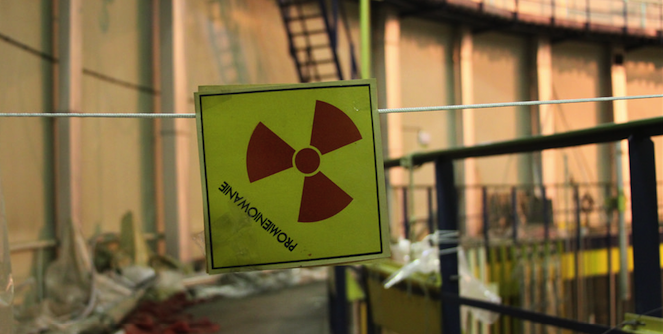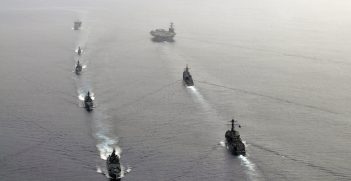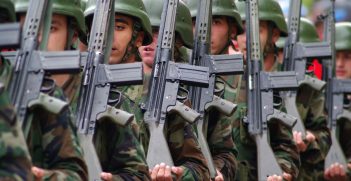The Nuclear Overreaction

The fearmongering that surrounds discussions about nuclear security must end for the good of the debate and the entire nuclear industry.
Bill Gates, the world’s richest man, recently confessed that one thing makes him feel truly powerless: nuclear terrorism. His fear is shared by 80 per cent of the US population, who believe nuclear terrorism is a major threat. This is the consequence of scare campaigns by loud and powerful voices in the nuclear security field. Yet the fearmongering about nuclear terrorism is overhyped and unnecessarily inflames mistrust in a public already opposed to nuclear energy.
Yukiya Amano, the Director General of the International Atomic Energy Agency (IAEA), warned world leaders in February that nuclear material is in danger of falling into terrorist hands. His statement was intended to scare 11 more states into ratifying the Amendment on the Convention on the Physical Protection of Nuclear Material. On paper, the IAEA’s warning seems justifiable, as the agency has received nearly 2,800 reports of radioactive material going missing since 1995. With such a large amount of missing nuclear material, it seems plausible that some may be acquired by terrorists. But there has yet to be a single case of nuclear terrorism.
In its coverage of Amano’s speech, the Associated Press highlighted just two reports among the thousands received by the IAEA. Last year, an operation led by the Federal Bureau of Investigation (FBI) stopped an attempt by Moldovan smugglers to sell radioactive caesium to Middle Eastern extremists. More recently, an industrial radiography device went missing in Iraq. Yet neither case warranted the alarm they caused.
The caesium incident in Moldova was one of four investigations carried out by the FBI and local police between 2010 and 2015. In the caesium investigation, just one vial of caesium was recovered and it contained a less radioactive isotope than feared. In two other cases, sellers offered undercover agents a piece of a depleted uranium cylinder and unenriched uranium, neither of which posed a serious threat. The fourth case allegedly involved plans to sell weapons-grade uranium but the amount offered was much too small to make a nuclear weapon. Although it could have been used to make a radiological dispersal device (RDD) – otherwise known as a “dirty bomb” – the perceived threat of RDDs is out of proportion, largely because the conventional explosion would disperse the radioactive material in non-lethal concentrations. Hence, current counterterrorism strategies are sufficient for managing RDD threats.
The only other major incident among the IAEA’s near 3,000 reports was the disappearance of a radiography device in Iraq. It contained radioactive iridium and was used to test for structural problems in oil pipelines. When a contractor confessed it was missing, officials worried it would end up in the hands of the Islamic State of Iraq and Syria (ISIS). Yet the iridium, while potentially deadly after a long period of exposure, was ill-suited to terrorist purposes; it cannot be used to make a nuclear bomb and its quantity was insufficient for a dirty bomb. Regardless, the device was found at a petrol station, undamaged and with the iridium untouched.
If these are among the worst cases the IAEA has received in over two decades, why is there such fear? A large part is due to the field’s complexity, which removes the discussion from the public domain and places it in the hands of nuclear security experts. In surrendering to their superior knowledge, the public allows these experts to dominate the conversation. They benefit from promoting fear of nuclear terrorism, because fear prompts world leaders to spend more money on the issue – even if it does not result in greater security. Yet wasted resources are far from the most problematic consequences of nuclear security scare campaigns.
The nuclear energy industry survived the Fukushima disaster but opposition to nuclear power remains high and rhetoric exaggerating the threat of nuclear terrorism could intensify community resistance. Nuclear scaremongering also manifests itself in more disturbing ways, such as the major role it played in the US decision to invade Iraq. More than three-quarters of Americans were led to believe that Saddam Hussein was in possession of nuclear weapons and that he was cooperating with al-Qaeda. They concluded that Iraq was prepared to provide al-Qaeda with nuclear weapons, producing such fear that the public supported the invasion and occupation of another state without waiting for evidence.
Despite being a remote threat, world leaders highlighted nuclear terrorism as a major challenge at the recent Nuclear Security Summit. Their speeches inflated the threat beyond its proportions, perpetuating the climate of fear that has sprung up around the topic. This scaremongering must end. A more honest engagement with the issue is needed to restore credibility to the nuclear security debate and faith in the nuclear industry.
William Baulch is an International Relations and International Security Studies graduate from the Australian National University. This article is published under a Creative Commons Licence and may be republished with attribution.





